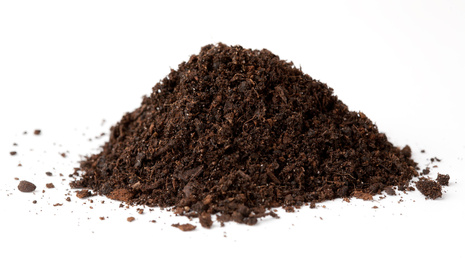Nitrogen which is a macro element needed by plants in about the amount of 10 kg per hectare is found with the protein in humus, usually within peptide linkages. And because humus is insoluble, this nitrogen is released slowly. The humus will often act as a buffer to prevent soluble compounds from being leached away. This helps stimulate plant growth (Moore p301).
Lignin the other major component of humus can greatly help in the forming of humic and fulvic acids by dioxide from gases in the soil and enzymes from soil organisms. These acids provide important cation exchange sites for hydrogen cations to be readily exchanged by other one (Moore p302).
Humus is important because it can absorb large quantities of water along with some types of clays and it helps with regard to soil structure and aeration. A soil will reach high fertility with a good supply of minerals from clay and an adequate amount of humus (Moore p302).
Humus is important in fertility but some types of humus may have greater fertility effects than other types. One type of humus is mor which is formed when soils are coarser and well drained with moderated to heavy rain and generally nutrient deficient from the start. Mor is low in bacteria and calcium and low also in pH scales. It therefore has a leaf litter layer which will decay very slowly form an O layer (litter) to an O2 layer (humus) to become a brownish or blackish peat. The high acidity prevents earthworms and therefore the mixing from the A and B horizons to the humus and litter layers. The fertility of the soil in this type of humus tends to have it’s organic matter limited to the O horizon and the top part of the A horizon. Most plant roots are also confined to these horizons which have organic matter. What’s more is that the podzolization process or rather the formation of mor humus appears not only encouraged by much rainfall and coarse soils but it is also encouraged by the plants in the surrounding area dropping litter of a high lignin content, low content and a high content of phenolic compounds.
The fertility factor for earth worms and bacteria as was mentioned for mor is reduced. However the actual amount of fungi biomass increases (although the number of species may not) as well as conifer tree tolerance for the soil. The animals that do find the soil fertile are arthropod like flies and beetles, mites and millipedes (Etherington p12).
Mull humus on the other hand provides good fertile ground for bacteria, earthworms and broad-leaf forests. The type of humus material is grey or black in colour and is no less in pH value than about five. Because bacteria in high decomposition is rapid and the humus particles become inseparable from the clay particles. This so called clay humus is microbiological stable and is excellent for maintaining the structure of fertile agricultural soils. In mull humus type soils there is a general increase in species and fertility is right for many deep rooted plants (Etherington p113).
